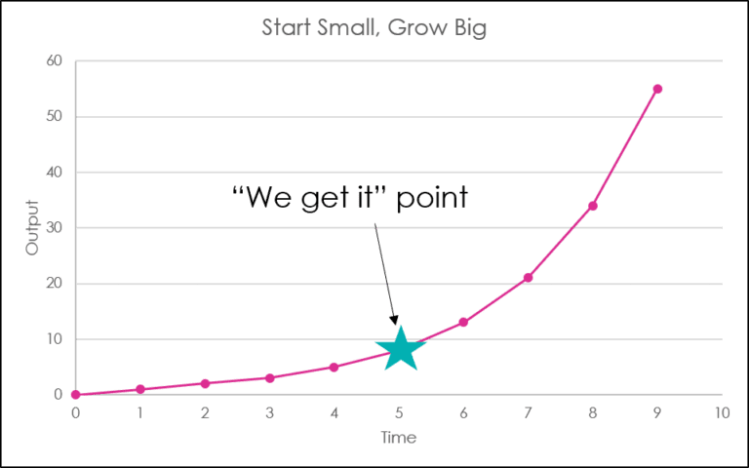In my last post on the importance of creating structure in Agile marketing, I compared Agile marketing to bread making. Let’s head back into the kitchen for one more post to answer a very common question in both baking bread and automating Agile marketing is ?where do I start??
Let’s get the obvious advice out of the way: pick the right time to begin, start small, and grow big. Just like in baking, don’t try a recipe for the first time on Thanksgiving Day right before your entire family arrives. Try it when there’s no pressure first. Trying out new technology or new strategies in a business setting also means accepting that there are things you don’t know when you’re just kicking off a transformational initiative and understanding that learning in a safe environment is best for you?and your new initiative’long-term. Organizational inertia?better known as ‘the way we?ve always done things??is definitely a real obstacle, but that big hurdle can be overcome with the right strategy and proper planning.
Right Project, Right People, Right Perspective
To find the starting place that’s right for your business, focus your energy on finding the right projects, gathering the right people to work with before you get started, and having the right perspective:
- Right project: Pick a project that has a small scope with no immediate urgency, but has a very high likelihood of being completed. Identify and avoid projects that are kicked off with low urgency and just never get done.
- Right people: Your initial partners in this initiative are critical because you’re relying on them to give you feedback that will help you to make the right adjustments to your company’s approach. Find a team that’s available?kicking off a project with the eCommerce team on Cyber Monday is probably not a great choice?and can also serve as flexible partners who are willing to accept short-term disruption for a really high return on increased output and, ultimately, a better balance of work. But that short-term disruption only usually happens on a poorly defined project anyway, so nothing is actually changing. Be aware?and empathetic’that it will ?feel? different because of different meetings and communication styles and it’s only natural to assume that the new methods are to blame (which they’re not).
- Right perspective: Below is an illustrative example of how the progressive evolution of an Agile marketing team will look with their output compared to time. The main point the graphic illustrates is that automating Agile isn’t something where your team stops working Friday, comes back Monday and suddenly their output is significantly increased. Your team needs a short amount of time to get comfortable with the process and, eventually, to start trusting the new way of work. Once the collective team reaches the ?we get it? point, you’ll see the massive upturn in output that adoption of Agile marketing promises.

Here are a few more resources to help you better chart your automation strategy:
Also, a h/t to our wonderful partner AgileSherpas who inspired some of the content in this piece. Most people we talk to are unaware of the role of an ?Agile Coach.? Being coached on how to navigate the changes that Agile introduces to your team is also a viable way to get your Agile project off the ground.


